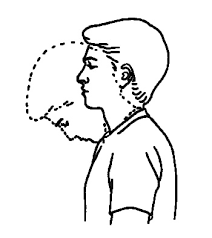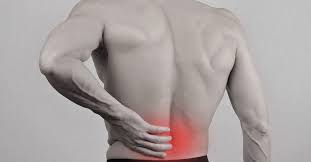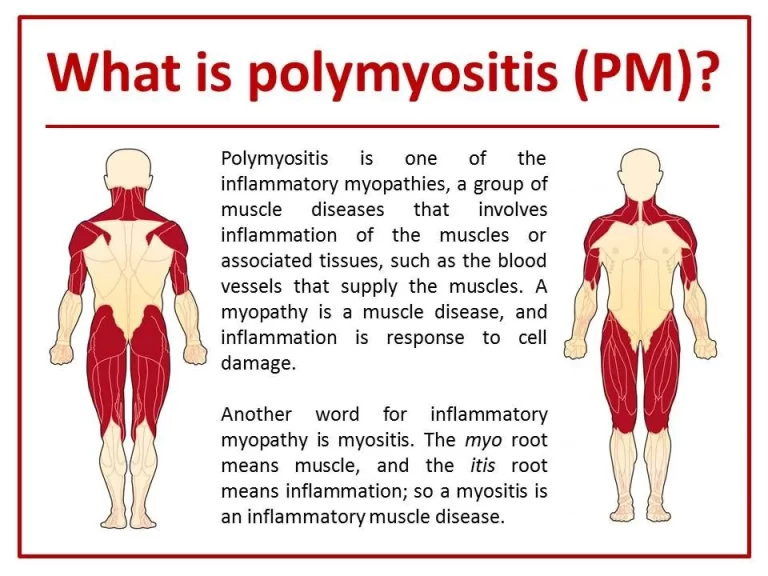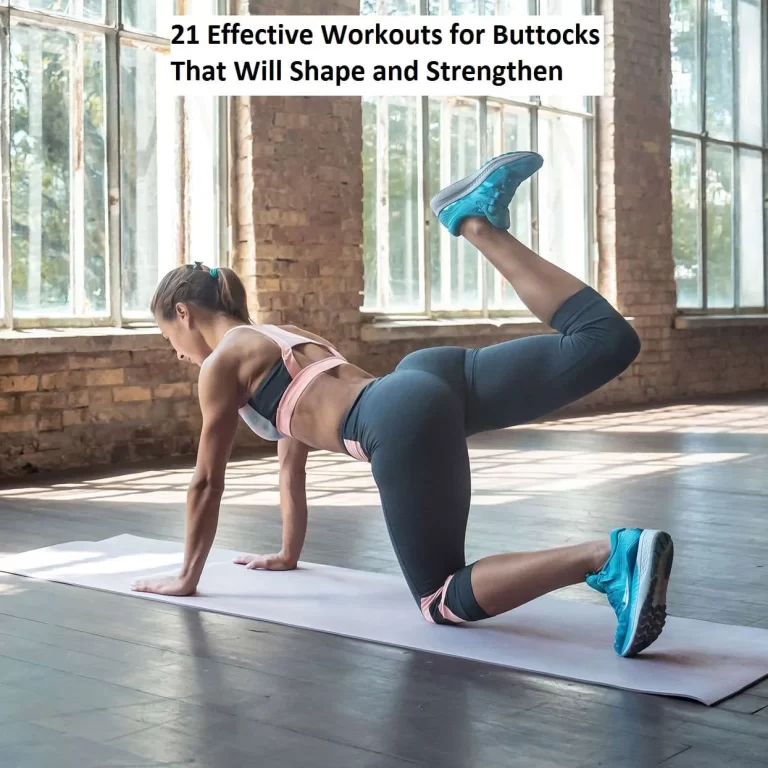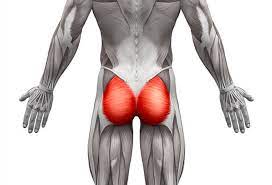Calf muscle exercises
Table of Contents
What is calf muscle exercise?
Calf muscle exercise is a great option to make your lower leg powerful, and flexible and has many health benefits.
- Calf muscle exercise includes different types of exercises such as stretching exercises and strengthening exercises. strengthening exercise helps to improve Joint flexibility, Increased muscle mass, Stronger bones, Weight control, & Balance. stretching exercise Improves performance in physical activities, Decreases the risk of injuries, Helps the joints move through their full range of motion, & Increases muscle blood flow. Enable the muscles to work most effectively, Improve your ability to do daily activities.
Calf muscle exercise includes 2 types of exercise
- Calf muscle Stretching exercise
- Calf muscle Strengthening exercise
What is calf muscle strengthening exercise?
- The calf is also overlooked in training, but they are essential muscles that control the motion of the ankle joints. The strong calf can prevent ankle injuries & help with the motion that happened at the foot, such as rising onto the toes, rotating your feet inward & outward, or pulling the toes towards the knees. These motions allow you to jump, run,& walk.
- Calf muscle strengthening exercise is a great way to make the calf muscles more powerful & strong & also improve their fitness. If you want to strengthen the calf muscles that are situated on the back side of the leg, then this article is really informative for you. in this article we discuss the few best exercise you can easily do at home to make the calf muscles powerful & strong & also health benefits of exercise.
- The calf is also overlooked in training, but they are essential muscles that control the motion of the ankle joints. The strong calf can prevent ankle injuries & help with the motion that happened at the foot, such as rising onto the toes, rotating your feet inward & outward, or pulling the toes towards the knees. These motions allow you to jump, run,& walk.
- Since the calf is relied upon for the motion you do every day, they are susceptible to injuries & strain. Strong calves and muscles can help to rehabilitate existing injuries or prevent future damage to the lower limb.
- If you have mobility problems, improving calf strength can benefit you as they support tendons, such as the Achilles. People who suffer from knee pain & plantar fasciitis can improve their symptoms by strengthening the calf as well. If you do have any pains or injuries, check with the doctor before doing this exercise.
- If you are an athlete, strong calves may improve your performance, especially during explosive bursts of power & speed due to the fast-twitch muscle fibers in the calf. If the participants are in jumping or fast-moving sports such as basketball, soccer, sprinting, or cycling, it is wise to do specific calf-strengthening exercises.
- Along with other muscles in your legs, the calves muscles, composed of the gastrocnemius & soleus, provide joint stability at the ankle. The gastrocnemius muscle is the more significant part of the calves muscle that creates the shape that you see. It has 2 heads that form a diamond shape with a split in the middle that you may see if you develop the muscle & are lean. The small muscle that lies beneath the gastrocnemius is known as the soleus.
- Many calves exercises strengthen both the gastrocnemius & the soleus, while others isolate any one of these. Several weighted & bodyweight exercises will strengthen the calves’ muscles, but some cardiovascular exercises particularly help strengthen the calf. Do not forget to warm up with mobility work & cool down at last by doing stretching after the workout.
What is the calf stretch exercise?
- Calf stretching is an important exercise to improve the flexibility of the lower leg & reduce the risk of injury & many health benefits. It is the most recommended warm-up exercise & if you are performing regularly then it increases your overall fitness level.
- The calves may feel tight for so many different reasons. The calf is a combination of 2 muscles called the gastrocnemius & the soleus. These muscles are used regularly by walking from place to place and participating in strenuous exercise.
- The calf consists of a network of muscles & tendons on the back & sides of the lower leg. The large muscle directly below the back of the knee is the gastrocnemius & the long muscles on the side & downward part of the calf are the soleus muscles. Both parts are attached to the heel through the Achilles tendon. When they don’t have flexibility, it may influence your distribution of weight and the pressure you’re giving to other parts of the body as you move around. As a result, The ankle, foot, &knee may not function how they should. This may cause pain, tightness, & even injury, sidelining you from your favorite activities.
- Calf pain has so many causes, involving tight & weak muscles of the lower leg, or an injury such as a calf pull or strain. Sometimes the pain isn’t enough to remind you to see a doctor, but it can still affect your fitness ability & enjoyment.
- Stretching the calf muscles may help decrease pain & muscle soreness. Remember to warm up with a few minutes of cardio or a warm bath before stretching, & never forget to take your time to stretch well after a workout.
What is the calf muscle?

- The calf muscle is located on the back of the lower leg. It is comprised of two muscles — the gastrocnemius & the soleus.
- These two muscles are met at the tendon of the Achilles tendon, which is attached directly to the heel. For Any leg/foot motion uses in these muscles.
The calf muscle is made up of two main muscles:
- The gastrocnemius is the larger thigh muscle, forming the bulge visible beneath the skin. The gastrocnemius has two heads, which together produce its diamond shape.
- The soleus is a lower, flat muscle that lies underneath the gastrocnemius muscle.
- The planter is one of the superficial muscles of the superficial posterior compartment of the leg,
- The gastrocnemius and soleus muscles taper and combine at the base of the shin muscle. A tough connective towel at the bottom of the shin muscle merges with the Achilles tendon. The Achilles tendon inserts into the heel bone. (calcaneus) In accretion to these two large muscles, a small muscle called the plantaris runs between the gastrocnemius and soleus down the length of the lower leg. providers call these three muscles the triceps surae. But also not everyone has a plantar muscle.
What are the health benefits of calf stretching exercise?
There are some advantages & benefits you can achieve by doing calf stretch :
- Activate the calf muscles. The calf muscles do many everyday functions, including walking & standing, so they can easily become fatigued or stiff.
- Improve the short-term range of motion. Improve range of motion. Such as ankle plantar flexion.
- Improve long-term flexibility.
- Decrease muscle soreness.
- It also helps in locking the knee.
- Improve circulation in your leg.
- Reduce the frequency of leg cramps.
- Avoid Achilles Tendinitis
- Avoid Shin Splints
What are the health benefits of calf strengthening exercise?
- The strong calf may improve performance,
- People who suffered knee pain & plantar fasciitis can improve their symptoms by strengthening their calves as well.
- Your entire lower body performance depends on the strength of the calf muscles.
- Runners, if you want to improve your speed then do calves raises.
- Yes, calf raises mean a big no to injuries.
- Stronger & flexible calves muscles give you better balance & stability.
- Helps to decrease the risk of ankle & foot injuries.
- Better agility when jumping & running.
- More explosive, rapid motion Great exercise for runners Calves exercise can also detect an older person’s ability to do activities of daily living
- Helps to reduce stress on an Achilles tendon This will give the lower leg to defined appearance.
- This exercise helps to stabilize the foot & ankle.
- Your whole lower body performance depends on the calves’ muscles’ strength.
Stretching exercise of Calf muscle

- Calf muscle stretch with and without a wall
There are 2 techniques for stretching the calf muscles. One needs a wall, & the other does not.
A. Calf muscle stretch with a wall
- Stand at arm’s length in front of a wall.
- Put down the left leg in front of the right. extend both arms to the wall.
- Press the back (right) heel into the ground & extend the back leg while keeping the front leg flexed.
- Hold this calf stretch for 15-20 seconds.
- Perform the stretch on the opposite side.
B. Calf muscle stretch without a wall
- Put down the left leg in front of the right leg.
- Transfer the body’s weight onto the left leg, while keeping the back heel pressed into the floor.
- Hold this calf stretch for 10-20 seconds.
- Perform the stretch on the opposite side.
- Stop arching the back when performing this stretch.
2 Heel cord stretch with bent knee
Heel cord stretch with bent knee stretch needs the use of a wall.
- Stand with the leg in front of the right leg.
- Lightly flex the right knee & slightly point the toes inward. compress both hands against the wall.
- Both heels are flat on the floor, compressing the hips toward the wall.
- Hold this calf stretch for 30 seconds.
- Perform the stretch on the opposite side.
- When doing Heel cord stretch with bent knee stretch, try to maintain the hips centered over both feet and prevent leaning to one side.

3. Towel Stretch
This stretch needs a hand towel.
- Sit on the floor with both legs straight out in front.
- Wrap the hand towel around the ball of the right foot. grab both ends of the towel.
- Keeping the legs extended, pull the towel toward the body, & hold the towel stretch for 15-30 seconds. Then, relax for 15-30 seconds.
- Perform the stretch 3 times, then perform the same on the other side.
- The back should be straight for the duration of the stretch.
4. Calf raises
- This needs a tabletop & chair for support.
- Stand with the same body weight on both feet. grab onto a tabletop or the back of a chair for support.
- Bend the left knee & lift the left foot. The right foot might take all of the body’s weight.
- Keeping the right leg straight, raise the right heel as high as possible. Lower it, & repeat this motion 8-10 times.
- Switch to the other side.
5. Dorsiflexion Stretch
- Sit on the floor.
- Attach the elastic band tightly surrounding a sturdy piece of furniture, such as a heavy chair & table. bend the opposite end of the band around the foot.
- Move the toes toward the body, then slowly come them to the beginning position.
- Repeat the movement10 times, and then change to the other side.
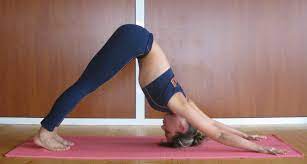
6. Downward-Facing Dog
- Start in all 4 limb positions with the wrists directly under the shoulders & the knees under your hips.
- Then, as you push your hands into the ground, draw your head between your elbows & walk your butt into the air.
- Drive the heels towards the ground. Hold Downward-Facing Dog calf stretching for 30-60 seconds, peddling the feet turn by turn.
7. Downward-Facing Dog
- Start in all 4 limb positions with the wrists directly under the shoulders & the knees under your hips.
- Then, as you push your hands into the ground, draw your head between your elbows & walk your butt into the air.
- Drive the heels towards the ground. Hold Downward-Facing Dog calf stretch for 30-60 seconds, peddling the feet turn by turn.
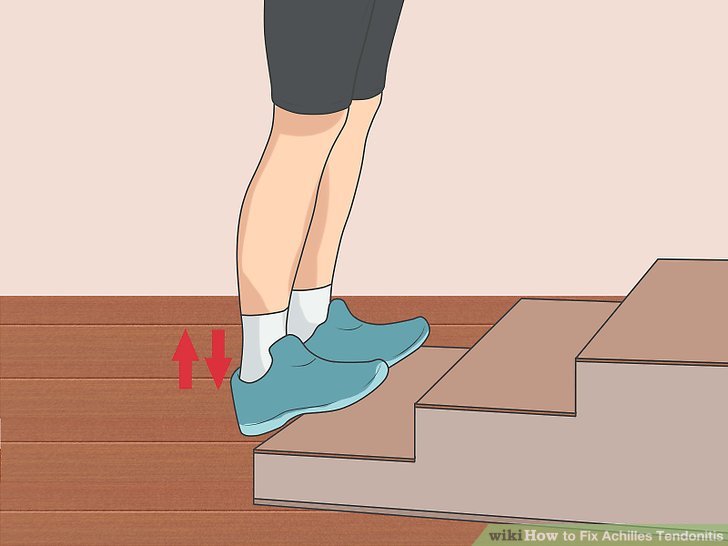
8. Heel Drop Stretch
- The yoga block, & find some elevated surfaces.
- Step both feet up & place the feet so that your left heel is over the edge.
- Drop most of the weight into that left heel as it drops toward the floor.
- Hold this heel drop stretch for 30 sec to a minute, then on other sides.
- To stretch angles of the calf, this stretch with the stretching leg slightly bent.
- The heel drop can also be a good dynamic stretch to do during the warm-up & to test the range of motion. Begin with the same setup but rather have both of the heels over the edge. Drop the heels toward the floor, then press through the balls of the feet as you lift the heels. Repeat for 10-12 reps.
9. Lunging Calf Stretch
- Stand facing some feet away from the wall. If you are not close to a wall, you can also just perform this with the hands on the hips.
- Put the hands on the wall for support & step 1 foot behind into a mini lunge, flexing the front leg & keep the back leg extended.
- Incline into the wall & press the back heel down so it’s flat on the ground. The far apart the foot is, the deeper the stretch will be.
- Hold this lunges stretch for 30 seconds. & perform it is on another side.
10. Standing Bent-Over Calf Stretch
- Stand with 1 foot behind the other.
- Flex the back knee & keep the front knee extended as you fold forward & grasp onto the front foot underneath the toes.
- Pull up gradually on the toes, feeling the stretch in the calf.
- Repeat on the other side.

11. Runner’s Stretch
- Face a wall & take a standing position 12 inches away from it.
- Straight the 1 leg behind you, keeping both feet flat on the ground & your rear knee extended.
- Given toward the wall until you feel the tension in the calf muscle of the straight leg.
- Hold the runner’s stretch for around 25 to 30 seconds.
- Perform with the other side.
12. Seated Calf Stretch
- Sit on the floor with the left leg in front of you.
- Lean forward & grasp the arches of the feet.
- Pull the toes toward the body till you feel a stretch in the calf muscles.
- Hold the seated calf stretch for up to 30 seconds.
13. Calf Stretches on a step
- Stand In tall on a step with the heel of the right leg to be stretching resting off the back of the step.
- Drop the heel by slightly flexing the other knee until you feel a stretch in your calf.
- Hold this calf stretch on a step for 30 seconds & do it 2- 3 times
- To stretch the gastrocnemius muscle, keep the knee extended throughout the stretching.
- To stretch the soleus muscle, flex the back knee slightly during the calf stretching.
- If you are performing the stretching exercises on the stairs, you can achieve more of a stretch if you place the other foot on a higher step.
14. Inner Calf Stretch
- Stand leaning on the wall with the leg to be extended back behind you.
- Laterally rotate the leg at the hip & then incline forwards until you feel a stretch in the calf, mainly on the inner side.
- Hold this calf stretch for 30 seconds & repeat 2-3 times.
15. Isometric Calf Raise
- Start standing up straight with a chair about hip height in front of you, you should put both hands on the back of the chair with your feet around shoulder-width apart.
- After grabbing the back of the chair, gradually lift both of your heels off the floor.
- You should be on the heels of your feet and this is where the raise should be coming from.
- Don’t put too much weight on your arms and maintain the position for the duration of time.
- Hold this isometric stretch for 30 seconds.
15. Stretching the calves with a folding chair
- Put the folding chair upside down on the mat so that the underside & legs of the chair face you & the seat faces the floor.
- If the bucket and underside are slippery, put another mat there or fold the mat to cover it. If you select the 2nd option, make sure the whole chair is still on the mat.
- Hinge at the hips to put the hands on the upper legs of the chair as you put 1 foot & then the other against the bucket of the seat.
- Compress the heels down toward it.
Variation with 1 foot on the chair
- As you breathe in lengthen the spine, & as you breathe out fold a bit deeper at the hips & flex the elbows for comfort. Hold
- here for 15-30 seconds. Then, if you select to go deeper, walk the hands and lower the legs of the chair.
- Continue to walk the hands lower the chair legs, pausing, breathing, & repeating till you have not reached the edge. When you have gone far you can sustainably hold, and pause there for up to 2-3 minutes.
- To come from the stretch, move the hands back up the chair legs. slowly step away from the chair one foot at a time & come to stand in half standing forward fold. Then gently come up & stand in mountain pose for a minute or longer to notice the connection between the feet & the ground. observe whether you feel a newfound sense of ease & steadiness while standing.
Strengthening exercises of the calf muscle.
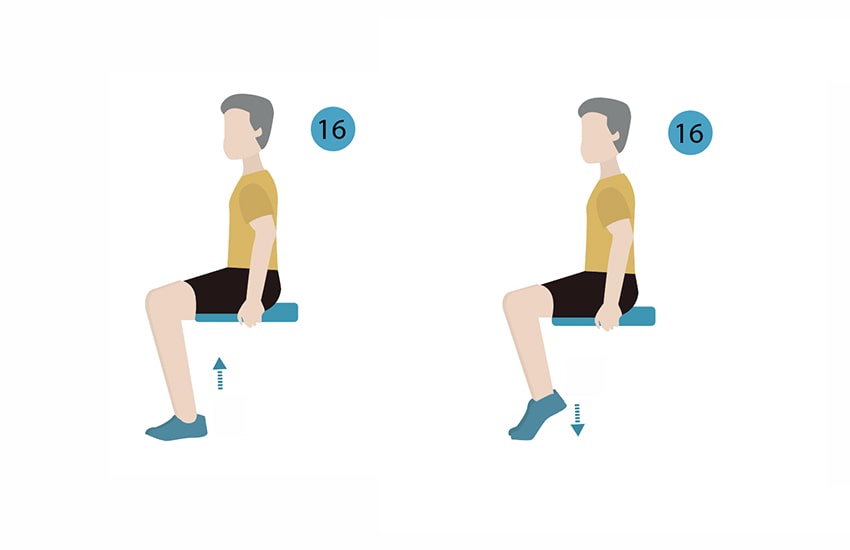
- Seated Calf Raise
How to do it?
- In seated calf raise exercise, you have to access the calf raise machine & another option would be holding something heavy on the lap, but this will not provide enough load to work the muscles properly.
- Since the knees are flexed, the gastrocnemius muscle is not working.
- The seated calf raises frequently target the soleus muscle.
- For this exercise, you have to Sit on a machine with the upper thighs placed under the pad.
- The pad should rest just above the knees. the ball of feet might be positioned on the footplate.
- Now lower the heels as much as possible. slowly elevate the heels while pushing the toes into the pad.
- You have to raise the heels until you feel a stretch in the calf & hold for 2 to 3 seconds before lowering down to the initial position.
- Do 15-20 repetitions.
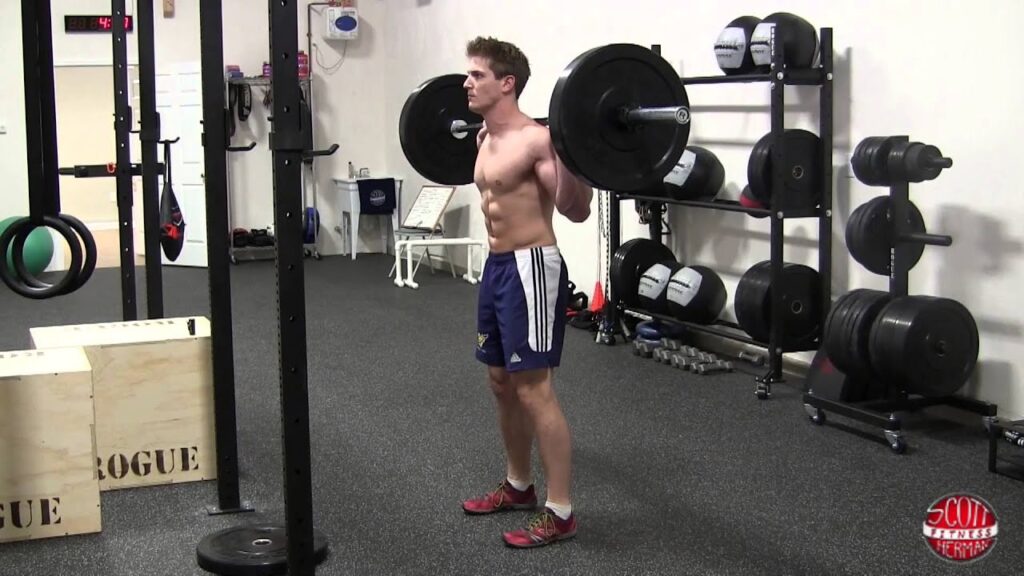
2. Standing Dumbbell or Barbell Calf Raise
How to do it?
- Standing Dumbbell or Barbell Calf Raise exercise will target the gastrocnemius part of the calves muscle.
- You can do this motion on an exercise step or with weight plates under the balls of the feet.
- You can use dumbbells or a barbell, & make sure you complete the motion slowly & with control.
- Stand on the weight plates, the arches of the foot, & the heels of the feet might be extended on the plate.
- If you perform this exercise with a barbell, put a barbell on the shoulder or with dumbbells then hold it in the hand by your side.
- Your back should be flat and engage your core muscles while your heels are raised.
- Hold for a couple of seconds at the top movement, now lower your heels but do not touch the ground.do this for 15 to 18 repetitions.
3. Barbell Split Squats
How to do it?
- Barbell Split Squats exercise will train the entire legs, but there is a significant focus on the calves.
- This exercise is an ideal choice for those who have limited time & wish to exercise their calf in both with the rest of their leg muscles.
- Place desired weight on the barbell in a squat rack.
- Put a barbell across the shoulder on the trapezius muscles. Now lift the barbell off the rack & step back from the rack the core muscles might be braced. step the right foot forward, leaving the left foot behind you.
- Lower the left knee towards the ground. push through the front right foot, and raise the leg back up to standing.
- Keep yourself in the split position, and don’t step the feet back together. Do this 10-12 times per slide.

4. Leg Press Machine Calf Raise
How to do it?
- Using this machine for calf raises is another option at the gym, especially if you do not have a seated calf raise machine or you are not comfortable using a barbell. The leg press machine supports the upper body so that you do not have to worry about losing your balance.
- If you are suffering from a knee injury or soreness, then you might avoid this leg press machine and calf raises machine.
- For this exercise, you have to Sit on a leg press machine with the feet flat on the plate & shoulder-width apart.
- Push the plate away from the body using the balls of the foot until the legs are near to locked out but not completely.
- Move by the toes into a tiptoe position and hold for 4-5 seconds before lowering back to flat feet.
- Do 10 to 18 repetitions.
5. Body weight Calf Raise
How to do it?
- This exercise is convenient to target the gastrocnemius that can be performed on an exercise step or the stairs or any stable, flat surface with an edge.
- You can even do this exercise on flat ground. You will likely want to have something nearby that you can hold for support.
- When you use the body weight is difficult, To pull or push on the support for assistance.
- To increase the difficulty, you can try performing this exercise on a single leg at a time.
- For this exercise, you have to Stand tall with the feet hip-width apart, & the core might be engaged, and the back might be in a neutral position.
- Stand near the wall or supporter for balance, or place your hands by your sides.
- With focus placed on the calf muscles, raise yourself onto the balls of your feet.
- Hold for a couple of seconds, feeling the contraction in the calf, before dropping the heels below parallel or back to the ground, if you are not using a step.
- Do 15-20 repetitions.
6. Jumping Calf Press
How to do it?
- Another excellent bodyweight exercise for the calf, the jumping calf press, is a plyometric exercise that will help build strength & explosiveness.
- For this exercise you have to stand naturally with hands by the sides, core muscles might be engaged, and back should be straight.
- Explosively press off the floor with the balls of your feet to jump into the air. slowly land on the ball of your feet.
- Focus on contraction & tension in the calves while not relying on the quadriceps to power jump.
- Do 10-15 repetitions.
7. Single-Leg Forward Leaning Calf Raise
How to do it?
- To advance the calves raise exercise, you can try performing the single-leg forward-angled calves raise. You can use any stable flat surface or a barbell in a rack adjusted to the preferred height.
- A lower surface will decrease the resistance. You can also try this with bilateral feet at once, which will make it easier.
- This exercise mostly targets the gastrocnemius but also incorporates the soleus muscle. For this exercise, you have to Stand facing a vertical surface or racked bar.
- Hold the barbell with an overhand grip wider than the shoulder width.
- Step the feet back to angle your body forward, your body might be in a straight line with arms extended.
- Your feet should point forward. flexed your knee to lift your right leg behind you.
- Raise the heel of the standing leg by extending the ankle as much as possible by you. Your body might travel in a straight line upward at an angle.
- Hold for 2 seconds & feel the contraction in the working calves. Slowly lower the heel back to the floor.
- Do 15-25 repetitions before going to another leg.
8. Wall Sit Calf Raise
How to do it?
- Wall Sit Calf Raise exercise can be performed as an isometric exercise where you hold the contraction the entire time & perform repetitions of calf raises.
- Holding the exercise will improve strength & muscular endurance.
- For this exercise, you have to stand with the back flat against the wall and the shoulder feet width apart two feet away from the wall.
- Engage the core muscles & slide the back down until your thighs are parallel to the ground.
- Keep your knees above the ankle, not on the toes. lift the heels off the floor by pushing through the balls & toes of the feet.
- Hold this position for 20 to 40 seconds or you can alternatively lower your heels back down.
- If you hold this movement then repeat for 3 times & rest for 30 seconds in between 2 repetitions.
9. Carioca Agility Ladder Drill
How to do it?
- Agility ladder drills are an excellent functional fitness exercise that targets the whole body & the cardiovascular system.
- Your calf will predominantly work with agility ladder drills as you do many of the moves with the balls of the feet as you quickly make your way through the rungs of the ladder.
- The Carioca drill relies heavily on the calf’s muscles for quick, explosive, agile movements.
- Stand on the left side of the agility ladder & then step sideways with the lead foot into the closest box. Next, cross the back foot behind the front foot into the second box.
- Continue switching the leg, stepping laterally across the ladder boxes, and rotating the hips as you move.
- Try to do smooth & controlled movements with fast feet. Repeat and go back through the latter the opposite way.
10. Jump Rope
How to do it?
- This is an excellent cardiovascular exercise, but it also helps to build strength in the calf.
- As you repeatedly jump from the balls of the feet, you will work the muscles of the calf, building strength, power, & muscular endurance.
- Grab a jump rope handle in both hands with the middle of the rope positioned back to you. Rope ends should be with the hips & hold out from your body.
- Rotate your wrists to swing the rope upward & over the head.
- While the rope moves down in front of you, jump over the rope with both feet, landing softly on the balls of the feet.
- Continue the motion swinging the rope behind you & back over your head again.
11. Cycling exercise

How to do it?
- Whether indoors or outdoors, cycling is a great way to train the calf muscles without lifting any weights.
- While weight training is vital for building muscle, cross-training with a cardiovascular activity such as cycling can also help to increase the calves’ strength & muscular endurance.
Here we explain some tips for making the most out of cycling for calves’ strength.
- Adjust the seat on the cycle, so you can lean forward & maintain a flat back when reaching the Hand supporter. Your abdominals & back muscles should be braced & core muscles are engaged while you lean forward.
- Take a warm-up by putting the cycle in the highest gear setting. Push the pedal in rotation by keeping tension in the calves while pushing down.
- After a few minutes change the gear to have more resistance and continue pushing by the leg muscles feelings the tension & contraction in the calf muscle.
12. Farmer’s Walk on Toes
How to do it?
- Grab heavy dumbbells in the hand by your sides.
- Rise on your toes & walk forward for 40 to 50 seconds.
- If you feel that you could have gone longer than 60 seconds, increase the weight. Do 2-3 sets.
13. Plyometric Lunge
How to do it?
- Start standing then take a step forward with the left foot & drop into a lunge, lowering the right knee to touch the ground.
- Push through the left heel to explode into a jump & switch legs in mid-air so you land in a lunge with the right leg forward.
- Use the arms for momentum. Repeat the lunge jump on the left leg.
- That is one repetition. Do 2 sets of 10-15 repetitions.
When did you not do this exercise?
- If you have any knee& ankle injuries then avoid these exercises.
- If the leg bone recently fractured.
- If the healthcare provider advised you to take a rest.
What are the frequent mistakes to avoid during calf stretches?
There are some mistakes you might avoid while stretching the calf:
- Back to the ground right away: The place of the legs should be slow & controlled for the effectiveness to be felt.
- Allow pressure on the arms: There are so many stretches for calf muscles so avoid pressing from the arms as this will give unnecessary strain on the upper body with no benefit.
- Not Keeping the Back extended: Try to keep an extended back & not be slumped forward. Use a long towel, strap, or belt so you do not have to flex forward to do the stretch in a long sitting position.
- Calf Muscle Stretching: If you are performing this stretch in the morning for plantar fasciitis, you might perform it before you get out of bed to loosen up before standing on the affected foot. But for other utilizations, it is best to warm up the calf muscles with some walking & other exercises before stretching.
- Never bounce during calf stretch, it causes injuries to the muscle.
What are the safety & precautions measures during calf muscle exercise?
There are many safety matters you need to follow :
- If you have any prior injury & chronic pain in the legs, back, or hips, consult with the doctor or physical therapist before starting any exercise program. After an injury, you should not do stretching until you can push the toes down against the ground without feeling pain.
- While stretching, you have to feel the tension in the muscles, but you do not feel any pain. If you feel pain, stop the stretching exercise.
- After an injury, you should not do stretching until you can push the toes down against the ground without feeling pain.
- Don’t perform when you have ankle & foot injuries.
FAQ
Running, walking, & hiking are excellent calf-strengthening exercises, especially when you go uphill. The steeper the climb, the more the calves have to work. Running sports such as soccer, basketball, & tennis demand that you run, jump, and push off the calf muscles to accelerate or change direction fastly.
Walking on recovering calf muscles can further increase recovery time. If you have to have surgery for a severe pull in the calf muscle, it may take several weeks or months before you fully recover.
When squatting, depending on the speed of the squat, different muscles are more targeted. However, the calves are always activated regardless of the type of squat & the speed with which it’s performed. So, yes, long story short squats definitely work calves & contribute to calf growth.
Walking burns fatter than cycling. This may be because it’s considered a weight-bearing activity, while cycling is not.
Lift one leg off the floor, & perform single-leg heel raises, also known as calf lifts, with the other. Move through a complete range of motion, from as low as you can go to as high as you can go. Try to do as many as you can with a full range of motion. Repeat on the other leg.

